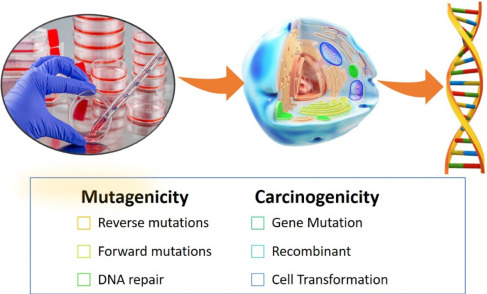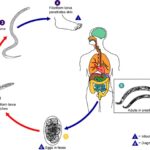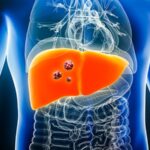Unknown oral substance toxicity represents a critical and complex medical emergency that arises when an individual ingests an unidentified chemical, medication, plant, or household item with toxic potential. Rapid identification, immediate intervention, and appropriate treatment are essential to mitigate life-threatening outcomes. This article provides a thorough analysis of the clinical approach, diagnostic tools, management protocols, and public health strategies surrounding unknown oral substance toxicity.

Overview: What Is Unknown Oral Substance Toxicity?
Unknown oral substance toxicity occurs when a potentially toxic agent is ingested, and the exact identity, dosage, or timing remains unclear. This scenario often presents in emergency settings, involving accidental ingestion (especially in children), deliberate self-harm, substance misuse, or altered mental states.
High-Risk Scenarios
- Children under five years of age
- Patients with psychiatric disorders or substance abuse history
- Individuals with limited healthcare access or language barriers
- Unsupervised or mislabeled medication storage
Common Toxic Agents in Oral Ingestion Cases
Although the substance may be unidentified, clinical patterns and regional epidemiology often suggest likely toxins.
Frequently Encountered Toxins
| Category | Examples |
|---|---|
| Pharmaceuticals | Acetaminophen, benzodiazepines, opioids |
| Household chemicals | Bleach, detergents, pesticides |
| Plants and fungi | Oleander, mushrooms, castor beans |
| Illicit substances | Methamphetamine, ecstasy, synthetic drugs |
| Alcohols and solvents | Ethanol, methanol, ethylene glycol |
Pathophysiology of Toxic Ingestion
The toxic effects vary based on the compound involved. In general, ingested toxins affect organ systems through metabolic disruption, neurotoxicity, or direct mucosal injury.
Toxins may undergo hepatic metabolism to either detoxify or activate harmful metabolites, resulting in systemic toxicity or organ failure.
Clinical Presentation and Symptoms
Symptoms of oral substance toxicity can be highly variable and nonspecific, making early diagnosis challenging.
General Signs
- Altered mental status (confusion, agitation, coma)
- Nausea, vomiting, abdominal pain
- Respiratory depression or tachypnea
- Bradycardia or tachycardia
- Hypotension or hypertension
- Seizures or muscle twitching
- Unusual breath odors (e.g., fruity for diabetic ketoacidosis, bitter almond for cyanide)
Toxidrome Patterns
Recognizing toxidromes—specific symptom clusters—can assist in narrowing down the possible toxin:
| Toxidrome | Common Agents | Features |
|---|---|---|
| Anticholinergic | Antihistamines, tricyclic antidepressants | Dry mouth, mydriasis, agitation |
| Cholinergic | Organophosphates, carbamates | Salivation, urination, miosis |
| Opioid | Heroin, morphine | Miosis, respiratory depression |
| Sympathomimetic | Cocaine, amphetamines | Hypertension, tachycardia, agitation |
| Sedative-hypnotic | Benzodiazepines, barbiturates | CNS depression, slurred speech |
Diagnostic Approach in Unknown Oral Toxicity
Prompt diagnosis combines physical assessment, laboratory investigations, and clinical intuition.
Initial Evaluation
- Primary survey: Assess airway, breathing, circulation (ABCs)
- Vital signs: Monitor for hypotension, bradycardia, hypoxia
- Focused history: Time of ingestion, symptoms onset, medications available at home
Essential Diagnostics
- Complete blood count and electrolytes
- Liver and kidney function tests
- Arterial blood gas (ABG)
- Serum lactate and glucose
- Toxicology screen (urine and blood)
- ECG (for cardiotoxic substances)
- Imaging if foreign body ingestion is suspected
Emergency Management and Stabilization
Immediate stabilization takes precedence over identification of the toxin.
Stepwise Intervention
- Airway protection: Endotracheal intubation if needed.
- Supportive care: IV fluids, oxygen supplementation, seizure control.
- Decontamination:
- Activated charcoal (within 1 hour of ingestion if airway intact)
- Gastric lavage (rarely used, high-risk)
- Whole bowel irrigation for sustained-release or body-packers
- Antidotes: Only when specific agents are suspected.
- Naloxone for opioids
- Flumazenil (rarely, for benzodiazepine toxicity)
- N-acetylcysteine for acetaminophen
- Atropine and pralidoxime for organophosphate poisoning
Observation and Ongoing Monitoring
Patients should be admitted based on severity and risk profile.
- Minimum 6-hour observation for asymptomatic ingestions
- Telemetry and ICU care for severe toxicity or unstable vitals
- Repeat laboratory tests to track metabolic parameters
Prevention and Public Health Recommendations
The majority of oral toxicities are preventable through strategic interventions.
Key Measures
- Child-proof containers: For all medications and chemicals
- Clear labeling and storage: Avoid reuse of food containers
- Public education: Awareness campaigns on household poison safety
- Poison control helpline: Immediate guidance in emergencies
Role of Poison Control Centers
Poison control centers are invaluable in managing unknown ingestions, offering real-time, evidence-based advice. Clinicians are advised to contact regional centers early in the assessment phase.
Long-Term Outcomes and Complications
Depending on the agent and delay in treatment, complications may include:
- Hepatic failure
- Acute kidney injury
- Anoxic brain damage
- Respiratory failure
- Psychiatric sequelae in intentional ingestion
Early intervention and proper follow-up reduce the risk of long-term morbidity.
Unknown oral substance toxicity is a high-stakes clinical challenge requiring swift assessment, empirical management, and supportive care. While the identity of the toxin may remain elusive, a systematic approach guided by toxidrome recognition, decontamination protocols, and vigilant monitoring enables favorable outcomes. Public awareness and preventive strategies are critical in reducing incidence, particularly in vulnerable populations.

